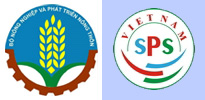
According to Mr. Tran Thanh Hai, Deputy Director of the Import-Export Department (Ministry of Industry and Trade), besides favorable factors, exporting goods will face certain difficulties. Typically, the Russia-Ukraine conflict is hurting the supply of production materials; transportation and logistics costs keep escalating over the past two years with no sign of "cooling down".
How do you evaluate the import and export results in the first three months of this year?
In the first three months of the year, the total import-export turnover made a record of US$176 billion, a very high growth rate, up 14.4% over the same period last year, of which exports alone grew 12.9%.
In particular, groups of agricultural products recorded relatively high export growth of about 18-19%, including special products such as coffee, rice and seafood, the growth rate was even higher from 38% to nearly 50%.
These are generally very positive signs for import-export activities.
It is commonly believed that Vietnam's goods export still has many growth opportunities, especially from the implementation of Free Trade Agreements (FTAs). What is your view?
I also think that Vietnam is making use of recent FTAs, especially large-scale FTAs with a deep level of commitment such as the Comprehensive and Progressive Agreement for Trans-Pacific Partnership (CPTPP), the Vietnam-EU FTA (EVFTA), the Vietnam FTA -The United Kingdom (UKVFTA), most recently the Regional Comprehensive Economic Partnership (RCEP).
These are all FTAs with very large-scale trading partners of Vietnam, which in fact, has had a significant effect.
For example, in the CPTPP, greenhorns signing FTAs with Vietnam such as Peru, Mexico, etc., have reached export growth from 25-35% which reveals very clearly the opportunities for businesses.
Meanwhile, thanks to the efficiency of the RCEP from January 1, 2022 with deeper commitments as well as clearer facilitation, businesses also have the opportunity to boost exports to these markets. In the RCEP bloc the integration of countries such as China, Korea, and Japan also provides raw materials for Vietnam. The RCEP agreement will create rotation, enabling Vietnam to better connect the supply chains of both output and input.
Besides opportunities, what are the difficulties faced by Vietnam's export goods?
The Covid-19 pandemic keeps negatively impacting Vietnam's economic development in general.
Despite recent positive signs and safe adaptation to restore production in Vietnam, the recent outbreaks of the disease in other markets especially in China have also impacted Vietnam. For example, China's current zero-Covid policy, which is ready to blockade an entire city or a production center in case of a Covid-19 case will hurt Vietnamese enterprises because of the independence of raw materials of Vietnam to such markets.
In addition, in terms of transportation and logistics, in the past two years, the impact of the pandemic has pushed up sea freight rates, so far there has been no sign of "cooling down". In China, when the disease spreads, it is possible that China's ports will also be congested, which will further prolong the transit time, keeping freight rates high.
In addition, the instability of the Russia-Ukraine conflict also makes it a double-whammy for Vietnam. Despite the modest trade turnover between Vietnam and Russia and Ukraine, these two countries provide basic raw materials, agricultural products such as wheat, raw materials such as coal, fertilizers, and other raw materials, metal products.
The Russian-Ukrainian conflict-hit prices in the market, rising input prices of raw materials in general.
It must also be added that the Russia-Ukraine conflict especially affects crude oil and petroleum products, pushing crude oil prices very high because Russia is the world's leading supplier of crude oil and gas. That affects the supply chain in general, including countries that import fuel and crude oil from Russia, pushing up prices in those markets, increasing pressure on the world market and at the same time escalating pressures on Vietnam's manufacturing activities. The most seriously hit ones are iron and steel, metals, chemicals and fertilizers.
In 2022, the Ministry of Industry and Trade aims to increase exports by 6-8% compared to 2021, reaching about US$363 billion; maintain the trade balance at the level of trade surplus. In your opinion, what are the key solutions to achieve the set goals?
Vietnam is making good use of overcoming the challenging period. At the same time, Vietnam also has good export growth momentum maintained over the years. In the future, taking advantage of FTAs is still the biggest concern of enterprises, associations, and state management agencies, which must work together to exploit and make good use of them.
Thank you very much!
Source: VCN
Keywords: logistics costs, exports, Russia- Ukraine conflict, RCEP, petroleum products, prices of raw materials



















